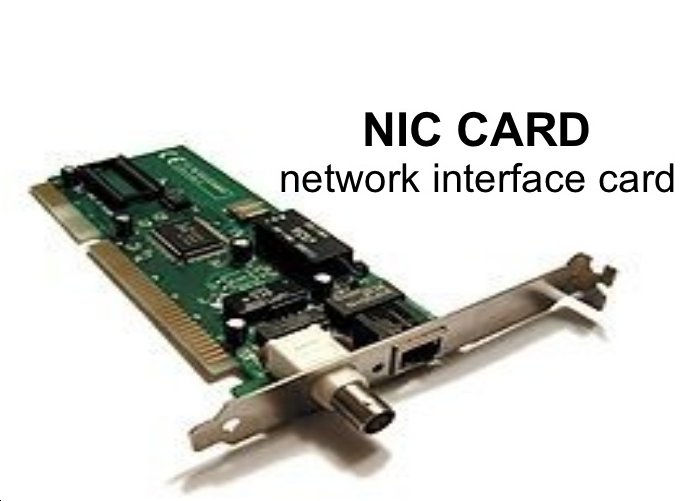- Related articles
- What Is Network Card PCI Express x4?
- All Cisco DS-CWDM4G1470's information (List price, Specs, Datasheet PDF, Compatibility mat
- Optical Transceivers for Cisco SG250-26-K9-EU Switch
- GBIC Module, Main Function & Key Features
- Optical Transceivers for Cisco WS-C3750V2-24TS-S Switch
- Optical Transceivers for Cisco N3K-C3172TQ-32T= Switch
- What the IEEE Designation for the Gigabit Ethernet Standard is?
- Optical Transceivers for Cisco SG350-28MP-K9-UK Switch
- Optical Transceivers for Cisco SLM224PT-UK Switch
- Cisco OneX Converter Module: the CVR-X2-SFP10G & CVR-X2-SFP10G=

The network interface card also known as network adapter or NIC, is a hardware device that allows you to connect to a computer network and share. Whether ordinary PC or high-end server, as long as the connection to the LAN, you need to install a network card. If necessary, a computer can also install two or more network cards. Such a common network card, do you know that how does it work? If you do not fully understand it, this article will you help you a lot.

How does a network interface card work?
A computer’s network card works by taking the data given to it by the CPU and sending it to a destination. It translates the data into a form that can be transferred via cables and then translates the data it receives back into data usable by the computer. Network interface cards receive this data from buses on the computer’s motherboard, typically those that send information toward the peripheral slots. The information is converted from a parallel structure to a linear structure by the network card, so it can readily transmit along cables. Once the network card receives the address for the destination device, the data is sent. Information sent back is then converted back into parallel structure and redistributed along the motherboard’s buses, so the CPU can process the received data.
Network cards can have multiple identifying addresses and can connect to several different networks at the same time. The process of managing what data goes to which address on which network is controlled by the network card. Other devices, such as printers, tablets and external hard drives can have their own network cards, and they can be designed to communicate with only specific networks. Every device on a network frequently broadcasts its address automatically, so transmitting data is easy.
Just like any other expansion card (e.g. Video card, Sound card, etc.) the network interface card must also be inserted into an open and available slot on your computer’s motherboard. After it has been configured, the proper drivers installed and your computer has obtained security access to a computer network, you are done.
Now you already know the working mechanism of network interface card, so that the function and application of it you also need to know.
What does a network interface card do?
A network card allows you to connect to a computer network. A computer network is a collection of two or more computers with communication between them through a medium. The communication medium can be through radio waves, wires, infrared, optical fibers, etc. By connecting to a network you can:
- Share or access resources
- Get on the Internet
Certainly, there are so many types of network interface card based on different classification method, so we’ll briefly introduce the types classified by configuration:
Types of network interface card
Jumper configurable network interface cards
Jumper configurable network interface cards are efficient and easy to use for older equipment. They have physical jumpers (small devices that control computer hardware without the need for software) that determine settings for the interrupt request line, input/output address, upper memory block and type of transceiver.
Software configurable network interface cards
Software configurable NIC must be manually configured when installed, but contain a proprietary software program that allows the operator to configure the NIC via a menu, or choose the auto configuration mode that determines what configuration is most suitable.
Plug-and-play configurable network interface cards
Most NICs today use the PnP technology as it does not have to be manually configured, though it can be. PnP NICs will auto-configure upon installation during the system boot-up sequence, but can cause conflicts with the hard drive.
Summary
We commonly use the Ethernet card in daily life. Currently, according to its transmission speed, network interface card can be divided into 10M card, 10 / 100M self-adaptive network interface card and Gigabit (1000M) card. If only as a general purpose, such as day-to-day office, we can use 10M network interface card and 10 / 100M self-adaptive network interface card, if applied to the server and other product areas, we must choose the Gigabit network card.





































































